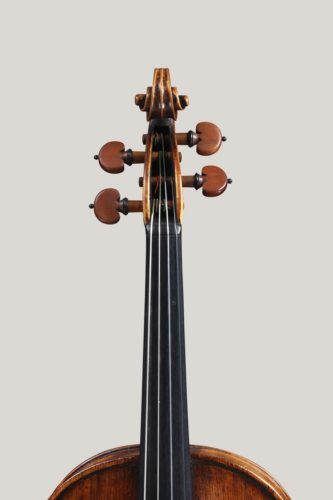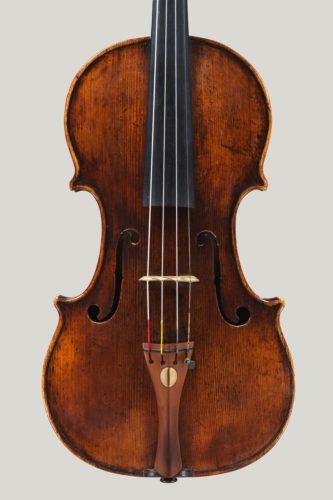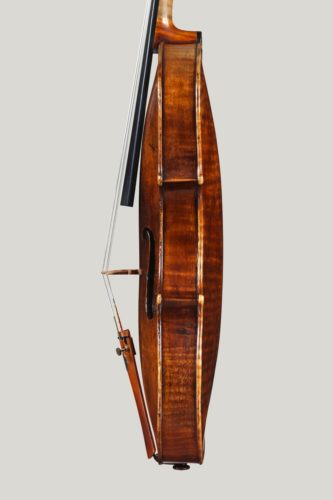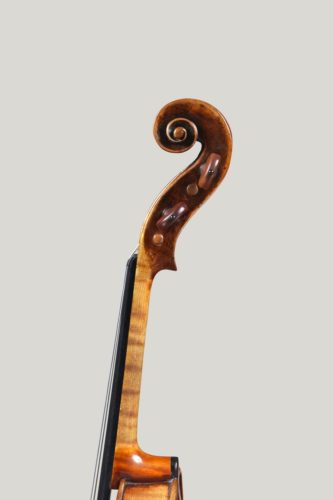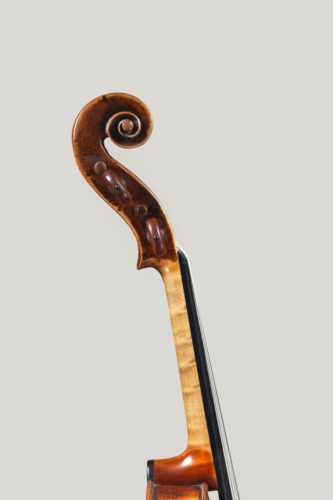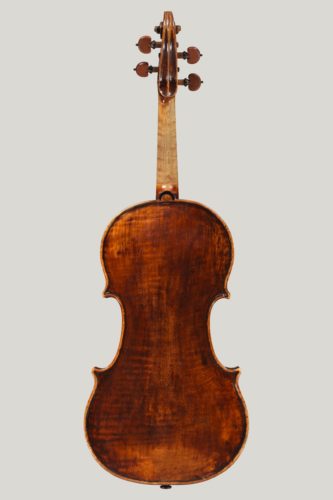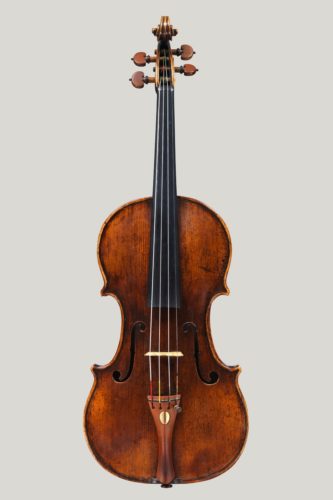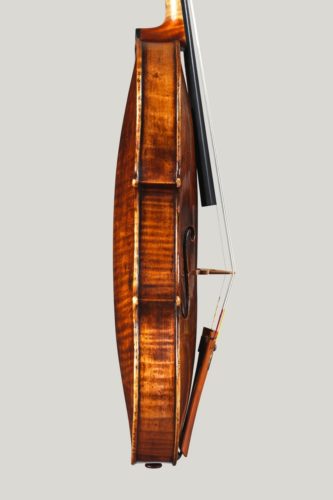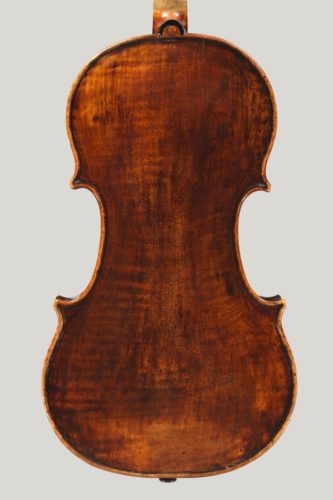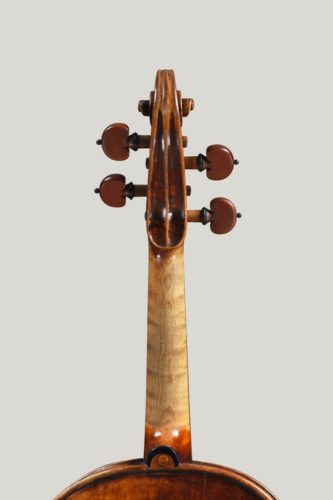Matteo Gofriller
Viola by Matteo Gofriller made in Venice in 1710. Magnus Boye Hansen plays on this instrument.
Italian violas from the classical period of violinmaking in the early 18th century are rare and highly sought-after. The viola was not a priority for makers at this period, although Brescian makers devoted great efforts to it in the previous century. The considerable variation in the size of the instrument is a complicating factor.
From the earliest times, violas were made with an enormous back length (often over 44cm) designated as ‘tenor’ size, which is unmanageable for the instrument’s modern repertoire. It was only in the late 17th century that the ‘contralto’ 41-42cm size was settled on, and to find an instrument of those dimensions made by one of the great masters is unusual.
Matteo Gofriller was the founder of the Venetian school of violin making, which rapidly developed into one of the few to rival Cremona. His cellos are particularly prized, and so are his violas, though they are far less common, and it is fortunate for posterity that he settled on the modern contralto size for his pattern.
Gofriller was born in the southern Tyrol, in Bressanone, in 1659, and probably received some initial training as a violinmaker in that region. He arrived in Venice in about 1685, and worked for another Tyroleanborn maker, Martin Kaiser. He took over Kaiser’s shop in 1690 and established himself as the leading – perhaps the only – violinmaker in the city until around 1710. By then, his own pupils Francesco Gobetti and the more celebrated Domenico Montagnana had begun to work for themselves. Matteo Gofriller himself seems to have retired from instrument making after about 1720, although he lived on until 1742.
Gofriller’s designs for viola and cello are quite original. His workmanship is lively, not always immaculately finished but very stylish, and generally embellished with a beautiful rich red varnish over a golden coloured ground coat which became the recognised marker of all great Venetian work. This viola is typical, and is striking in its long, open middle bouts and broad, rounded upper and lower bouts. Superimposed on this are long, graceful soundholes, giving this large form a particular elegance. Gofriller scrolls are always distinctive, with a rather small and slender spiral placed on a long, sturdy pegbox, a very practical design which accommodates the strings and pegs easily. Although Venice was the richest of trading ports, with good access to the most prized Balkan maple, the wood of this viola is typically modest in appearance, cut on the slab in one piece, with a rather faint transverse figure. The ribs appear to be made from mixed stock, with strikingly figured middle bouts, but rather plainer elsewhere, while the scroll is almost completely plain and unmarked. The front is of fine quality spruce, but even so is arranged a little oddly, with the straight and vigorous grain jointed in the opposite manner to convention, having the broader growth at the centre of the instrument rather than the edges.
Although the label in the viola is a facsimile, bearing an anachronistic date of 1729, the instrument carries with it certificates from Rembert Wurlitzer of New York and Willliam Moennig of Philadelphia attesting to its authenticity, and indicating that it resided in the United States in the latter part of the twentieth century. It was acquired by Dextra Musica in 2006.
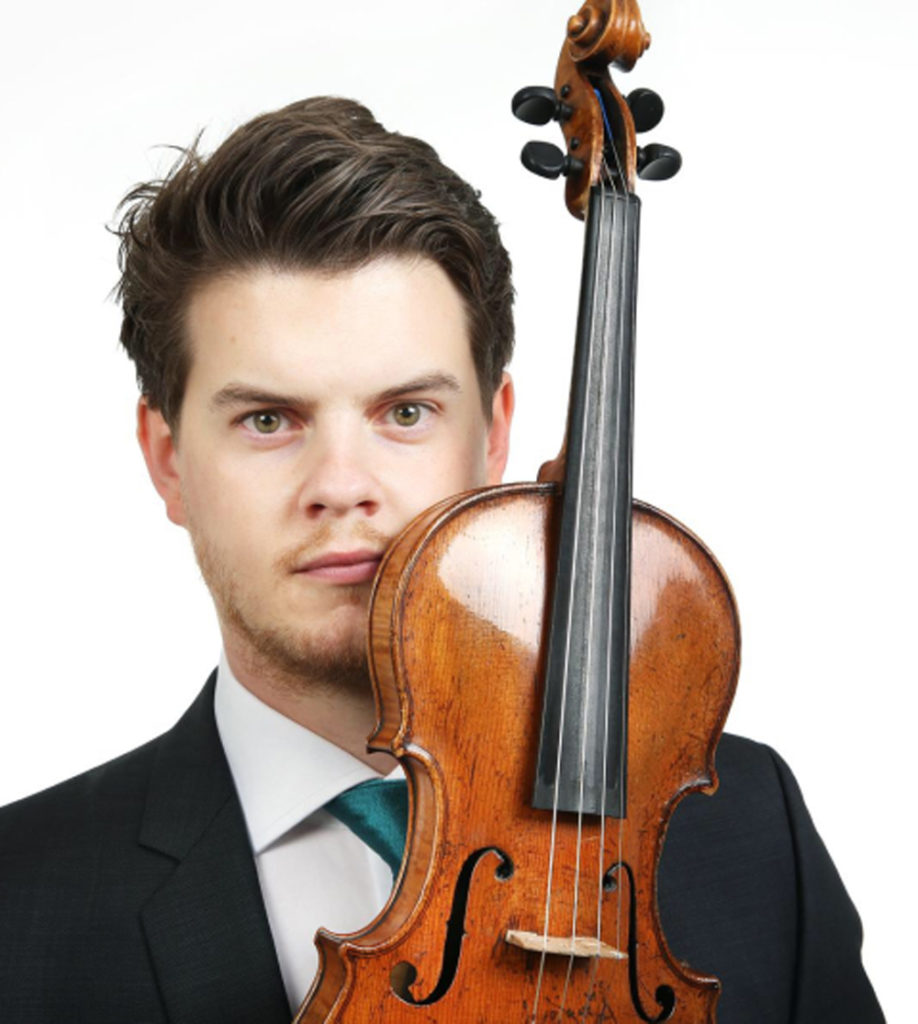
Magnus Boye Hansen
Magnus Boye Hansen has his background from the Barratt Due Institute of Music in Oslo, University of the Arts in Berlin and the Academy of music in Oslo. He is a violinist in the Norwegian Radio-orchestra and a member of the critically acclaimed Oslo String Quartet.
